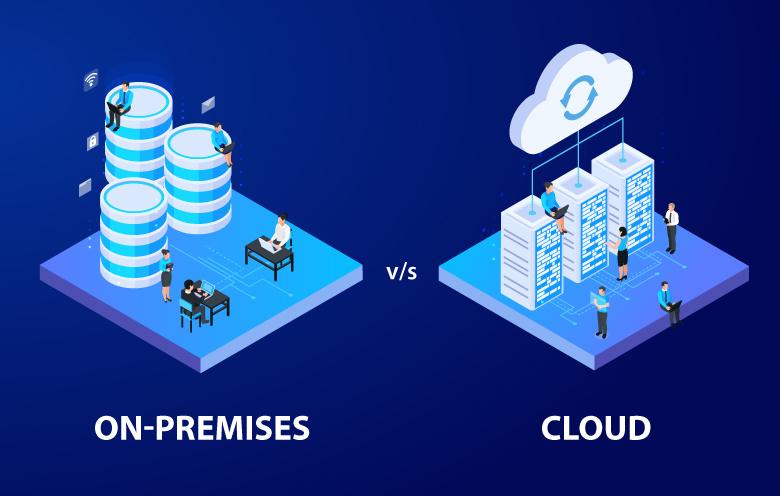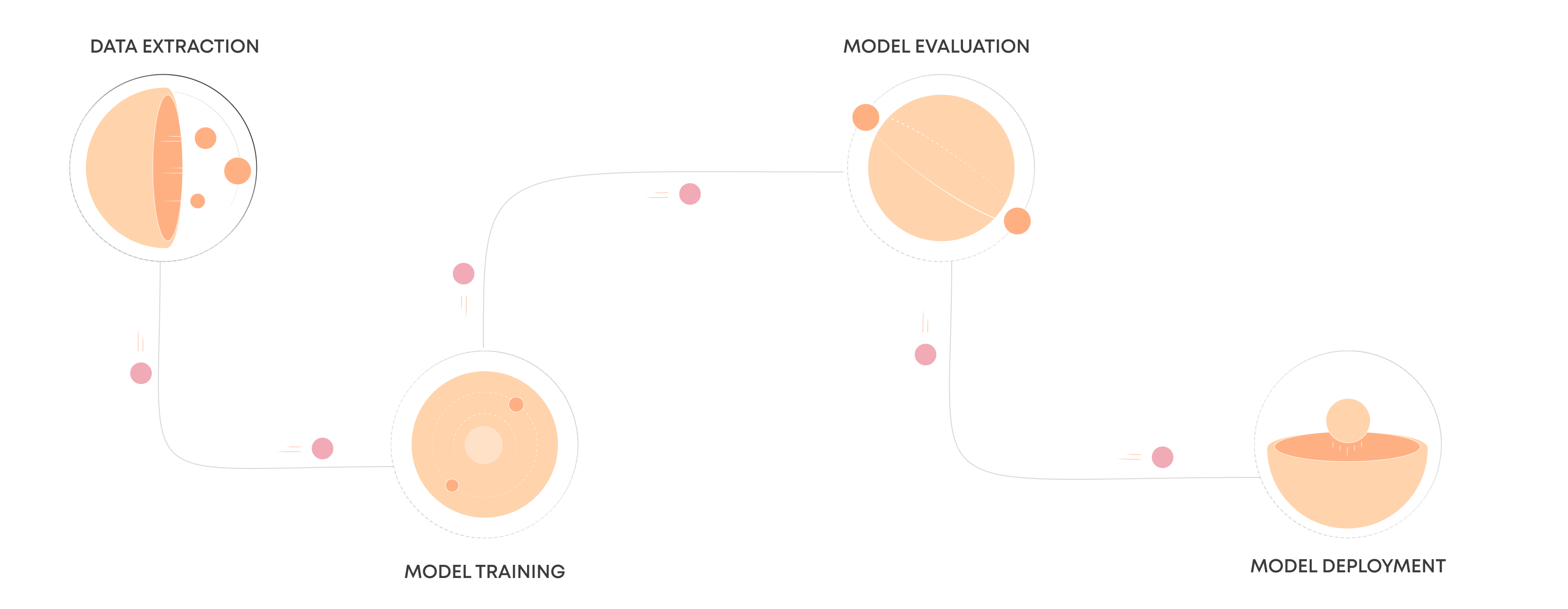As organizations race to deploy large language models (LLMs) in daily operations, the first instinct is often to use a cloud-based API (e.g., GPT-4 or Claude) for convenience. It’s quick, requires no hardware investment, and seamlessly scales. However, if you plan to run agentic AI, which can involve multiple reasoning steps and tool use for each request, your token usage (and bills) can skyrocket.
In this post, we’ll compare cloud-based LLM costs to on-premises deployments of a state-of-the-art 70B-parameter model, such as Llama 3 70B. We’ll examine three enterprise scenarios—Small, Medium, and Large—each with different user counts and monthly token usage. Then, we’ll look at where an on-prem solution breaks even (and eventually saves you money) versus paying per-token fees in the cloud.
1. Why 70B Parameters?
Models like Llama 3 (70B) are considered state-of-the-art in the open-source world. With 70 billion parameters, these models can handle complex tasks, multi-turn reasoning, and domain-specific fine-tuning. In enterprise settings, that extra capacity can yield stronger performance—especially for agentic use cases where the AI must plan, reason, and interact with tools or knowledge bases.
Key Features of a 70B-Parameter Model
- Advanced Reasoning: Larger models (70B+) can often “think” through multi-step processes more reliably than smaller models.
- Domain Adaptation: They can be fine-tuned or adaptably prompted to handle specialized business topics.
- Competitive Performance: Benchmarks show that well-tuned open-source models can approach or sometimes rival proprietary systems.
However, these benefits come with a hardware footprint: a 70B-parameter model typically requires tens of gigabytes of GPU memory for inference—even more if you want to run in higher precision or serve multiple users concurrently.
2. Cloud vs. On-Prem: The Core Trade-Off
- Cloud:
- No Upfront Hardware: Pay per token (or per GPU hour).
- Instant Scalability: Add capacity on-demand.
- Zero Physical Maintenance: Infrastructure is the cloud provider’s responsibility.
- On-Prem:
- Upfront Hardware Investment: Servers, GPUs, storage, etc.
- Operational Control: Full data isolation and compliance oversight.
- Lower Per-Request Cost at Scale: Beyond a certain usage threshold, your hardware can pay for itself quickly.
3. Sample Scenarios: User Counts & Token Usage
Let’s explore three fictional enterprises—Small, Medium, and Large—each using a 70B-parameter agentic LLM for tasks like customer support, internal knowledge Q&A, or business-process automation. We assume GPT-4–style pricing for the cloud:
- $0.03 / 1,000 tokens for prompts
- $0.06 / 1,000 tokens for completions
- A 50/50 split between prompt vs. completion
For on-prem, we calculate:
- Hardware: GPUs (e.g., NVIDIA A100), server chassis, CPU, RAM, networking.
- Annual Operating Expense (OpEx): ~15% of hardware cost (power, cooling, maintenance).
Summary Table
Scenario | Small Enterprise | Medium Enterprise | Large Enterprise |
Approx. User Count | 100–200 | 500–1,000 | 5,000+ |
Monthly Tokens | 50M | 200M | 1B |
Cloud Cost (Yearly) | $27k | $108k | $540k |
On-Prem Hardware | $30k (1× A100 40GB + server) | $45k (2× A100 80GB + server) | $80k (4× A100 80GB + server) |
OpEx (Yearly) | ~$4.5k | ~$6.75k | ~$12k |
Year 1 On-Prem Total | $34.5k | $51.75k | $92k |
Break-Even Point | End of Year 2 | ~6–7 months | ~2 months |
Note: Running a 70B-parameter model (like Llama 3 70B) on-prem generally requires at least one high-memory GPU (40GB or 80GB) and quantization (4-bit or 8-bit) to reduce VRAM requirements. For concurrency or larger context windows, multiple GPUs are often recommended.
4. Detailed Breakdown
A. Small Enterprise
- Users: ~100–200
- Monthly Token Usage: ~50M
- Cloud Cost: $27k/year
- On-Prem Hardware: $30k for 1× A100 (40GB) + server, $4.5k OpEx/year
- Year 1 On-Prem: $34.5k vs. $27k in the cloud
You won’t see immediate savings in Year 1; cloud is cheaper initially. However, in Year 2, on-prem adds just $4.5k, while cloud would be another $27k. By the end of Year 2, you’ve spent $39k on-prem total vs. $54k in cloud fees—a $15k difference in favor of on-prem.
B. Medium Enterprise
- Users: ~500–1,000
- Monthly Token Usage: 200M
- Cloud Cost: $108k/year
- On-Prem Hardware: $45k for 2× A100 (80GB) + server, $6.75k OpEx/year
- Year 1 On-Prem: $51.75k vs. $108k in the cloud
You break even in about 6–7 months. For the remainder of the year, you’re effectively “saving money” compared to paying monthly cloud bills. By Year 2, you’ll pay just $6.75k more for maintenance, while the cloud model would demand another $108k.
C. Large Enterprise
- Users: 5,000+ or a consumer-facing product
- Monthly Token Usage: 1B
- Cloud Cost: $540k/year
- On-Prem Hardware: $80k for 4× A100 (80GB) + server, $12k OpEx/year
- Year 1 On-Prem: $92k vs. $540k in the cloud
Break-even occurs around 2 months into the first year. If your usage remains high (1B tokens/month), you’ll rack up cloud bills near $45k/month—so after two months ($90k), you could have already covered nearly your entire hardware cost.
5. Beyond Cost: What Else Matters?
- Data Control & Compliance
- Many enterprises can’t risk sending sensitive data off-site. With an on-prem model, you have full data governance—particularly crucial in finance, healthcare, defense, or other regulated sectors.
- Customization & Fine-Tuning
- On-prem solutions let you fine-tune your 70B-parameter model with proprietary data, adding domain-specific knowledge and improving model accuracy beyond what’s possible via a generic cloud API.
- Maintenance & Expertise
- Managing large LLMs in-house requires skilled personnel. Model updates, GPU drivers, quantization techniques—these all become your responsibility.
- However, many medium to large enterprises already have DevOps or MLOps teams in place.
- Scalability & Elasticity
- Cloud handles usage spikes gracefully, but costs scale linearly with tokens.
- On-Prem requires you to buy for your peak usage. If you rarely hit that peak, resources sit idle.
- Model Upgrades
- With the cloud, you get instant access to new versions (GPT-5, Claude Next, etc.).
- On-prem means you decide when (and if) to upgrade the model—helpful for stability, but you must manually download, optimize, and test new releases.
6. Conclusion: When Does On-Prem Win?
Scenario | Monthly Tokens | Yearly Cloud Bill | On-Prem Hardware | Break-Even |
Small Enterprise | 50M | $27k | $30k + $4.5k OpEx | End of Year 2 |
Medium Enterprise | 200M | $108k | $45k + $6.75k OpEx | ~6–7 Months |
Large Enterprise | 1B | $540k | $80k + $12k OpEx | ~2 Months |
- Small Enterprises: Cloud is cheaper initially. If you keep usage modest, you might stick with the cloud—though by the end of Year 2, on-prem could still pull ahead if usage remains consistent or grows.
- Medium Enterprises: You’ll likely see ROI within the first year—sometime around month 6–7.
- Large Enterprises: With 1B tokens/month, you can pay off an $80k–$90k system in just 2 months of avoided cloud fees.
Ultimately, cost isn’t the sole driver: compliance, customization, and data privacy might mandate an on-prem solution even at lower usage. However, if you’re hitting tens (or hundreds) of millions of tokens monthly, it’s worth running the numbers—because at that point, a 70B-parameter on-prem solution could pay for itself surprisingly fast.
Final Thoughts
A 70B-parameter model like Llama 3 70B offers state-of-the-art performance for agentic AI. Cloud remains the easiest path to prototype and scale, but if your token usage is substantial or your data is highly sensitive, on-prem can be both strategic and cost-effective.
Whether you’re a small enterprise looking at Year 2 ROI or a large enterprise hitting break-even in just 2 months, the key is to monitor your usage. Crunch the numbers, weigh compliance requirements, and decide which deployment approach best aligns with your organization’s growth trajectory and risk profile.
Disclaimer: All cost figures are approximate and will vary by region, hardware vendor, cloud provider pricing, and the specific setup required to run a 70B-parameter model at scale. Always validate with up-to-date quotes and real-world usage data.


